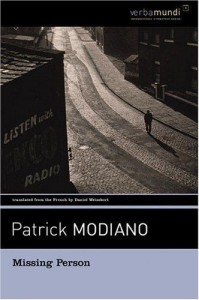This article was written by Dr Carmen Mangion from Birkbeck’s Department of History, Classics and Archaeology. The article was originally published on the History Workshop Online‘s blog.
The ‘burkini ban’ issued by 30 French beach towns at the end of July 2016 sparked a media frenzy. Town mayors saw the burkini, the full-body swimsuit favoured by some Muslim women as a means of maintaining modesty while enjoying the sea, as a symbol of Islamic extremism and a threat to ‘good morals and secularism’. France’s 1905 constitution separates Church and State, and embraces a laïcité (a secularism in public affairs which prohibits religious expression) meant to limit religion’s influence on its citizens though still allowing freedom of religion. It originated as a means of eliminating the influence of the Catholic Church.Following ministerial criticism, France’s top administrative court investigated the ‘burkini ban’, ruling in late August that it violated basic freedoms.

Amidst this furore, Italian Imam Izzedin Elzir’s image of nuns on the beach in their religious habits triggered an international media response. The image, appearing across social media and in outlets as prominent as the New York Times, implied the hypocrisy of a ban targeting Muslims and ignoring Christians. The photos were ironic on two counts:
First, some French mayors were emphatic that nuns in habits were also forbidden on beaches.
Second, and more apposite to this blog post, both the media and ‘ordinary’ citizens seem to be unaware that the ‘nun’ on the streets of Paris (and elsewhere) once sparked a similar outrage.
The historical context was of course different (it always is), but the indignation and the drive to control women’s appearance was just as virulent. Such outrage was not limited to France, but as the ‘burkini ban’ was initiated by the French, it seems appropriate to begin with this bit of French history.
The French revolution of the 1790s, with its cry of liberté, égalité, fraternité was not such a good thing for Catholic nuns. The nun, in her religious habit, became a symbol of the Catholic Church’s role in upholding the inequities and injustices of the ruling classes within France. Catholic nuns, then fully habited, were visible on the streets of Paris as educators, nurses and providers of social welfare, and became targets of anti-clerical outrage. The republican political regime set French nuns ‘free’ from their lifelong vows of poverty, chastity, obedience and their religious habit. It closed convents and confiscated their property. Some members of religious communities weren’t so willing to be set free, however, and were imprisoned. They were told to remove their religious habits (made illegal in 1792) and instead wear secular garb. Nuns including the Carmelites of Compiègne and the Daughters of Charity of Arras were executed for refusing to take the oath of loyalty to the Constitution.
French citizens also made their umbrage against nuns known. One 1791 print representing revolutionary anticlericalism, La Discipline patriotique or le fanatisme corrige (‘The patriotic discipline or fanaticism corrected’), showed the market women of Paris’s les Halles disrobing and thrashing the religious fanaticism out of a group of nuns. Such disciplining of women’s bodies was both salicious and violent.

The patriotic discipline or Fanaticism corrected (La Discipline patriotique ou le fanatisme corrigée) (Image: BnF/Gallica)
This urge to control the religious ‘fanaticism’ of women and monitor their clothing choices was not only a French issue; it had earlier incarnations. The dissolution of the monasteries in England in the mid-sixteenth century also ‘freed’ nuns and monks from their vows — and their property. English women’s response to this was to form English convents in exile, many in France and Belgium. In the 1790s English nuns fled, often surreptitiously, back to England. But penal laws restricting Catholic practices were still in effect and English bishops initially discouraged nuns from wearing their religious habit. English citizens too showed their indignation for female religious life by throwing epithets and stones at nuns; the Salford house of the Daughters of Charity of St Vincent de Paul was set alight in 1847. Similar events happened in the United States. Most notoriously the Ursuline convent in Charleston, South Carolina was burned down in the 1830s by anti-nun rioters. In the Netherlands, in Spain, in Belgium, in Germany and more recently in Eastern and Central Europe, nuns were also targeted. Women in religious clothing were (and are) easy targets of vitriol and violence.
So burkinied Muslim women and habited Catholic nuns have far more in common than one might think. The nun’s religious habit, like the burkini, has links to religious identity as counter to cultural norms. Critics say that women in burkinis challenge the French secular way of life. History shows that the habited nun also challenged both a republican version of Frenchness and also an English version of Englishness.
Within this context, the burkini furore illustrates two points.
First, it is yet another disappointing reminder that women’s bodies and appearances remain far too often more relevant (and newsworthy) than women’s intellects and voices. Clothing regulations are an excuse to control women and to divert attention from more substantive issues. They are a means of enforcing a societal version of femininity that doesn’t allow for difference. Women choosing to wear religious dress (or dress associated with religious affiliation) should not be stigmatised.
Second, by focusing on the burkini, we forget the more salient issue of figuring out how diverse people can live together peacefully. It is the social, economic and political factors that need attention: cultural inclusion, high unemployment and participation in civic life. Criminalising what women wear on the beach doesn’t even come close to addressing these issues.
Further Reading:
- Carmen Mangion, ‘Avoiding “rash and Imprudent measures”: English Nuns in Revolutionary Paris, 1789-1801’ in Communities, Culture and Identity: The English Convents in Exile, 1600-1800 edited by Caroline Bowden and James E. Kelly (Ashgate, 2013), pp. 247-63.
- Gemma Betros, ‘Liberty, Citizenship and the Suppression of Female Religious Communities in France, 1789-90’, Women’s History Review, 18 (2009), 311–36
- For a robust comparison of nineteenth-century American nativism to the politics of Islam see José Casanova, ‘The Politics of Nativism Islam in Europe, Catholicism in the United States’, Philosophy & Social Criticism, 38 (2012), 485–95. A short and accessible version of this essay can be found here.


